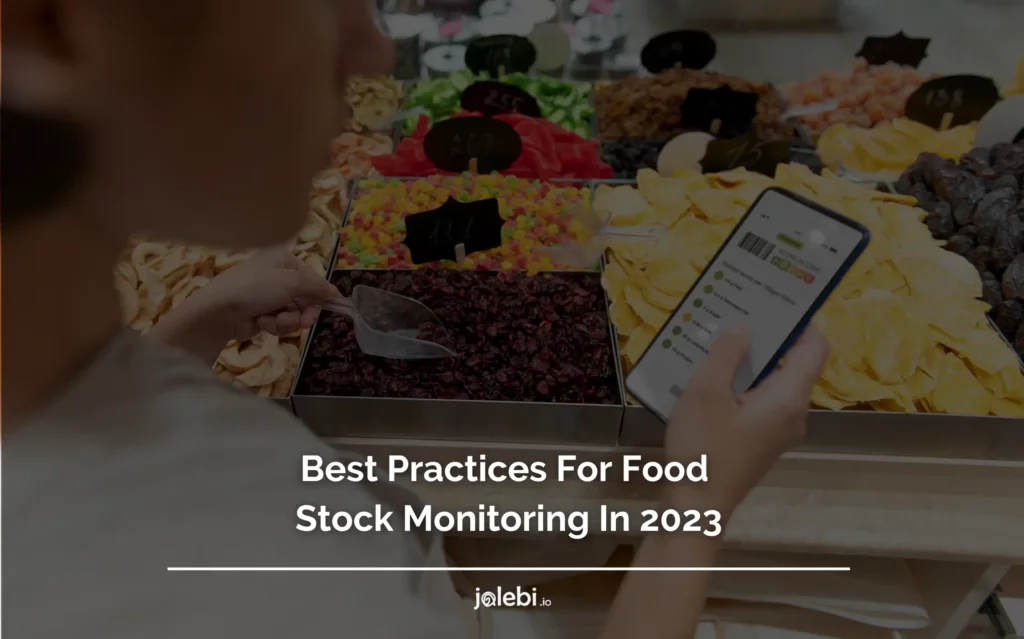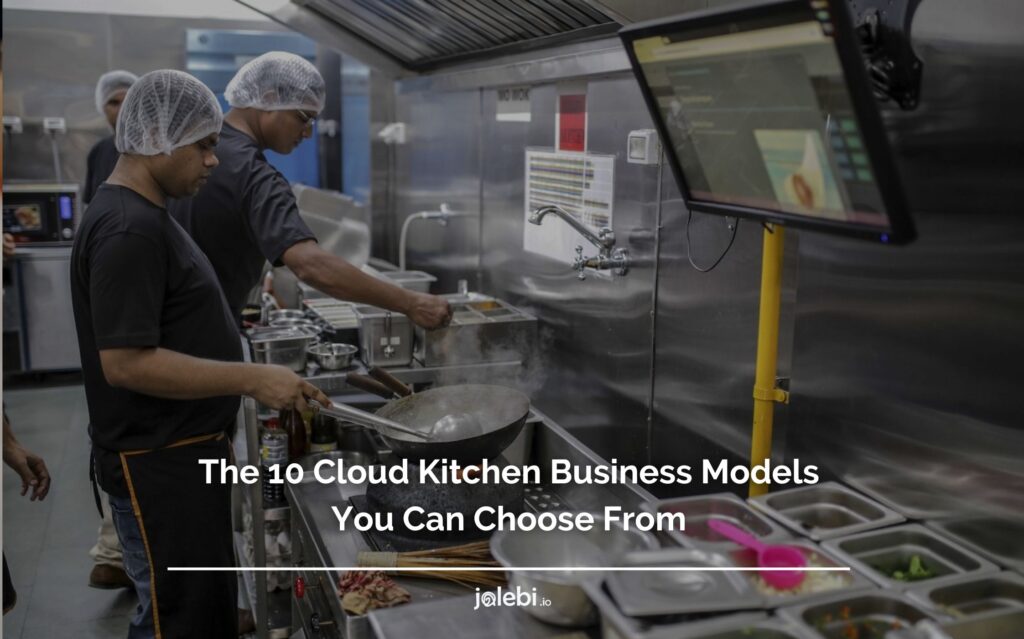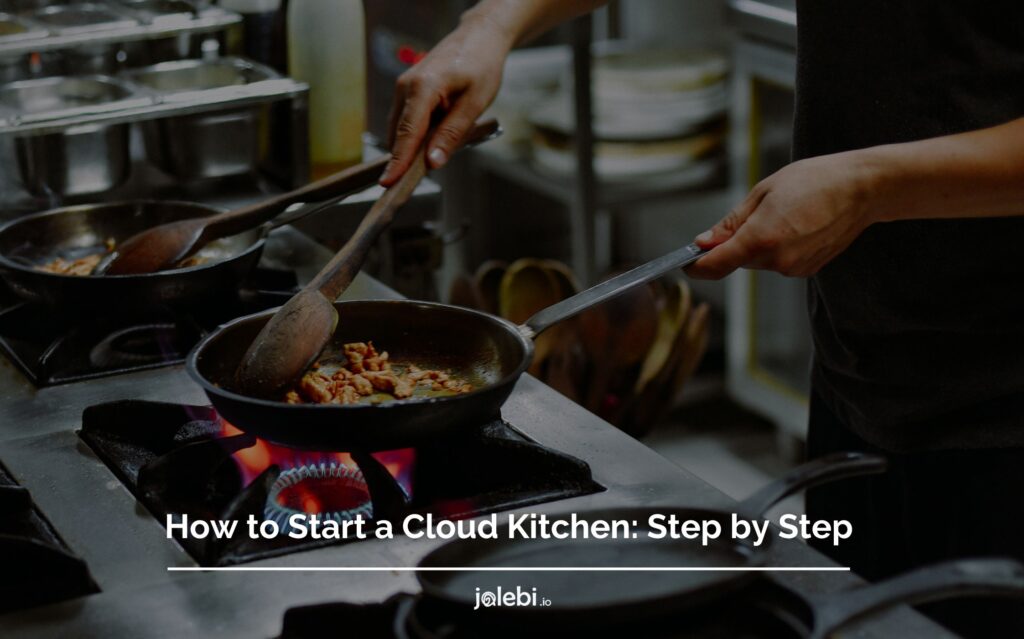Table of Contents

If a restaurant does not keep track of its food inventory, it risks running out of ingredients needed to make menu items.
It can result in unhappy customers who cannot order their preferred dish and may choose to dine elsewhere in the future.
In addition, the restaurant may waste money by ordering too much of an ingredient that ends up going bad before it can be used.
To avoid these problems, restaurants should enable food stock monitoring to keep track of what food items they have on hand, and regularly update these records as new items are added or old ones are used up.
Are you unaware of the ways to streamline food stock monitoring? Read this blog post to see five best practices of food stock monitoring and take your restaurant management to the next level!
What Is Food Stock Monitoring?
10% of food goes to waste before even hitting the customer’s plate.
Food stock monitoring is the process of tracking and managing the inventory of food items in a food service establishment.
Monitoring of stock includes keeping track of what food items are in stock, how much of each item is available, and when new supplies need to be ordered.
Why Is Monitoring Of Stock Essential At A Restaurant?
Monitoring of stock is essential at a restaurant for several reasons. Here are a few of them.
1- Supply Chain Management
By keeping track of stock levels, restaurants can ensure that they have the necessary ingredients on hand to meet customer demand.
It helps to avoid disruptions in the kitchen as your restaurant would not run out of a necessary ingredient once a dish is ordered.
2- Cost Control
Stock monitoring is an important tool for boosting cost control in any organization.
This process can be especially helpful in restaurants, where food costs can quickly add up.
3- Customer Satisfaction
96% of customers believe that customer service is the main reason why they choose to remain loyal to a brand.
Food monitoring helps to improve customer satisfaction by providing accurate information about what items are available. This is especially important for restaurants, where customers need to know what menu items are available before they make their order.
By accurately tracking the inventory of food items, restaurants can avoid disappointing customers by running out of their favorite dishes.
Overall, stock monitoring is a critical part of controlling costs within any restaurant business.
By tracking food expenses and keeping a close eye on spending, restaurants can ensure that they are not overspending on this essential area of their operation.
Top Five Best Practices for Stock Monitoring At Restaurants
Monitoring food inventory at a restaurant can be a complex task.
There are many important factors to keep in mind when it comes to stock monitoring at restaurants and it is crucial to stay on top of stock levels in order to avoid running out of food or over-ordering.
Here are the top five best practices to follow when it comes to monitoring stock at a restaurant.
1- Keep Track Of What You Have On Hand
If you’re like most people, you have a love-hate relationship with your pantry. On one hand, it’s great to have a place to store all of your food and supplies.
On the other hand, it can be frustrating when you can’t find what you need or realize that you’re out of something important.
If you want to be sure you always have enough food on hand, it’s important to keep track of what you have in stock.
An effective stock monitoring system can help you do this by keeping track of what you have in your pantry, fridge, and freezer.
This way, you’ll always know what you need to buy and when you need to restock.
If you’re looking for stock monitoring tools, partner with jalebi’s restaurant operating system which provides you with real-time inventory tracking to monitor food stock.
2- Know Your Suppliers
Good relationships with suppliers are essential for any business that wants to ensure accurate stock availability monitoring.
When you have a good relationship with your suppliers, they’re more likely to be timely and accurate with their shipments which would help you to keep a record of inventory promptly.
This type of supplier relationship management is especially important in industries where product demand can fluctuate rapidly, such as the retail and food service sectors.
jalebi is one of the best stocking monitoring tools that can streamline your suppliers with its CRM and simplify ordering and restocking.
With jalebi, you can be sure that your inventory is accurate and available when you need it. jalebi’s CRM tool ensures that your suppliers are always up to date, so you can focus on running your business, not chasing down orders.
3- Leverage The FIFO Method
Pay close attention to the expiration dates of all your food items and rotate stock accordingly. This will ensure that the food you serve is fresh and of the highest quality.
If you want to assure that your restaurant always has efficient stock monitoring, then you need to use the FIFO method when storing your inventory.
The system stands for first in, first out, and it means that the oldest items in your stock should be used first.
That way, nothing goes to waste and you can always be confident that your food is of the highest quality.
By using the FIFO method, you can help rotation of inventory and make sure that your food is always fresh by consistently monitoring the stock.
4- Store Food Properly
If you’re a restaurant owner or manager, then you know how important it is to keep a close eye on your food stock. After all, if you run out of food, then your customers will be very unhappy.
Storing food properly helps restaurants to monitor food stock consistently so that they can avoid any potential shortages.
Make sure that all your food is stored correctly – this includes both raw ingredients and prepared dishes.
Here are a few different ways that you can opt for to make sure that your food is stored properly so that it leads to stock availability monitoring:
- You need to have a good storage system in place. This means having shelves or racks that are designed for storing food items.
- You need to make sure that your food is labeled clearly. This will help you keep track of what needs to be used first and what can be saved for later.
- Finally, you need to rotate your stock regularly. This means using older items first and stocking new items at the back.
5- Train Restaurant Staff
Did you know that businesses that invest in training have a 24% higher profit margin than those that don’t?
Your restaurant staff needs to be trained in food stock monitoring to reduce food waste and keep costs down.
The staff should be aware of efficiently using all of the ingredients before they reach their expiration date.
It includes both cooked and raw ingredients, as well as any leftover raw materials from previous meals.
Here are a few key things to keep in mind when training your staff to monitor stock:
- Make sure that they understand the importance of keeping accurate records. This means teaching them how to properly document when items are used and restocked.
- Stress the importance of timely communication. If someone notices that an item is running low, they need to let someone know right away so that it can be addressed.
- Lastly, emphasize the importance of following up on any issues that arise.
If there is a problem with an order or something runs out unexpectedly, it is important to follow up with the supplier to ensure that it doesn’t happen again in the future.
By taking these steps, you can ensure that your staff is properly trained to monitor stock levels for your restaurant.
Monitor Your Restaurant Stock With jalebi
If you’re looking for stock monitoring tools, partner with jalebi. jalebi’s restaurant operating system is the most comprehensive and user-friendly solution on the market.
jalebi’s Unparalleled Features
- Inventory Tracking
With jalebi, you’ll be able to track every aspect of your restaurant’s inventory, from food and beverage items to kitchen supplies.
- Consumption-Based Monitoring
What’s more, jalebi integrates with your restaurant’s menu based on consumption making it easy to monitor your inventory levels according to everyday consumption.
- Universal Menu
jalebi is a powerful menu management tool that enables restaurants to have a universal menu across all of their branches.
It is extremely convenient for restaurants as it allows them to monitor their food stock in one central location, ensuring that there is a single source of truth for all of their locations
Partnering with jalebi is the best way to monitor your restaurant’s inventory and ensure that you’re always stocked with the supplies you need. Contact us today for more details!
Final Thoughts
Now that you are familiar with the best practices for food stock monitoring in 2023, incorporate them into your restaurant management practices to stay on top of your game.
By following these best practices, you can be confident that your restaurant is stocked with fresh, high-quality ingredients and running smoothly in 2023!
Frequently Asked Questions
- What are the 4 stock control methods?
- FIFO
- LIFO
- Just-In-Time
- Economic Order Quantity
- What are the 2 types of inventory?
There are two main types of inventory: periodic and perpetual.
- Periodic inventory is a system where inventory is only counted at set intervals, such as once a year or once a quarter.
- Perpetual inventory is a system where inventory is counted continuously.
- What are the three areas of stock management?
There are three primary areas of stock management: acquisition, storage, and distribution.
- The acquisition involves the procurement of new inventory, either through purchase or production.
- Storage is where inventory is kept safe and secure until it is needed.
- Distribution is the process of getting inventory from the storage area to the point of sale or use.











